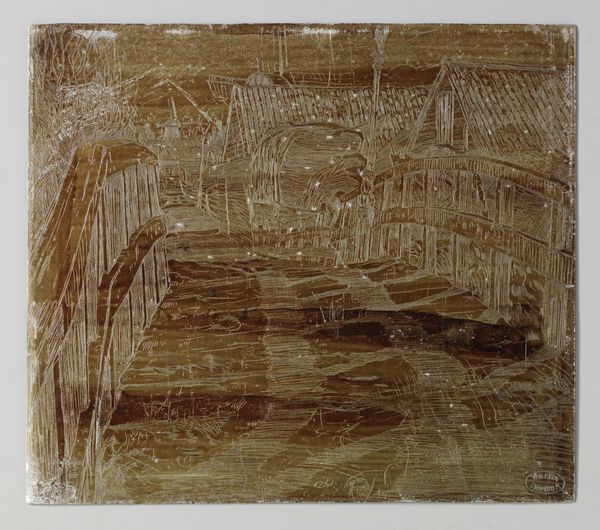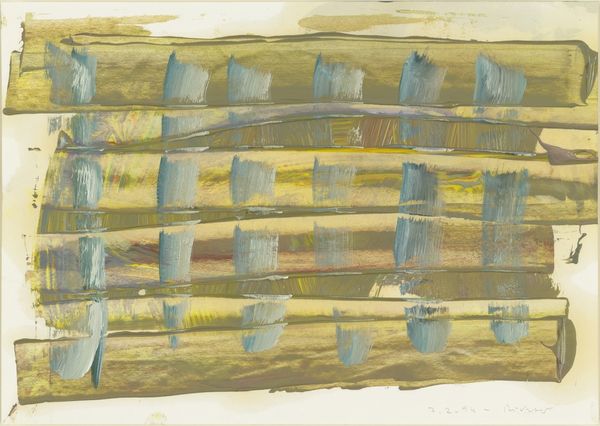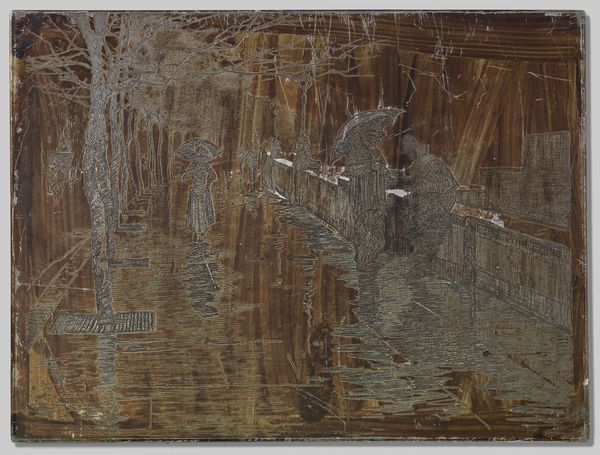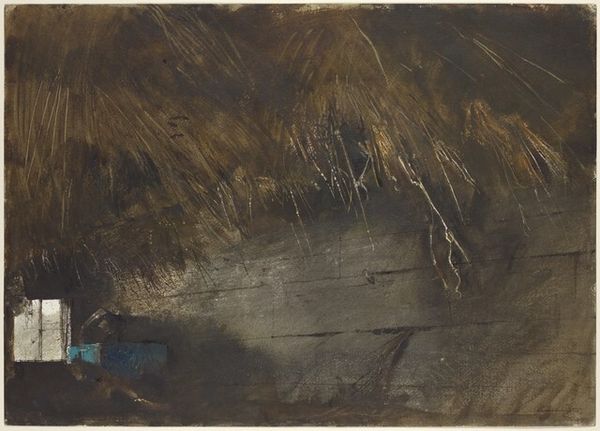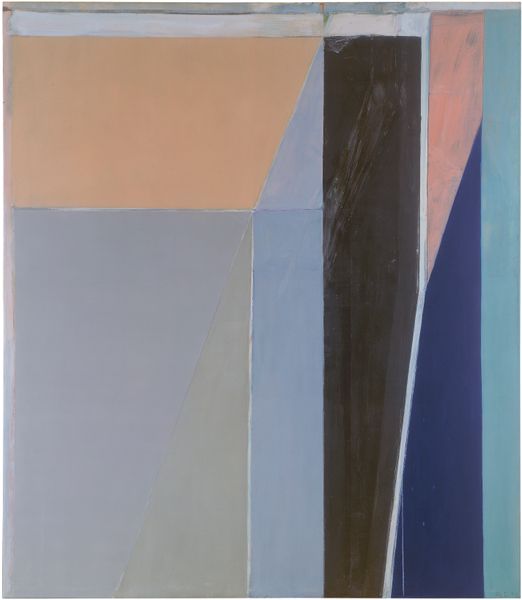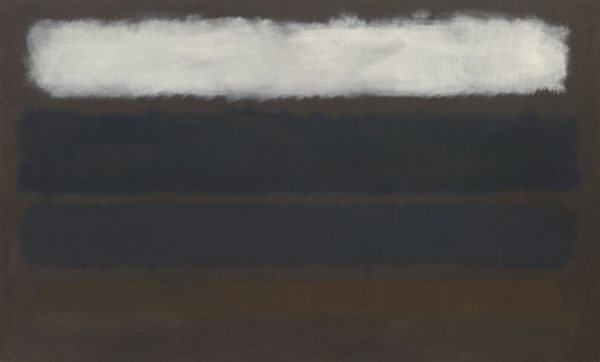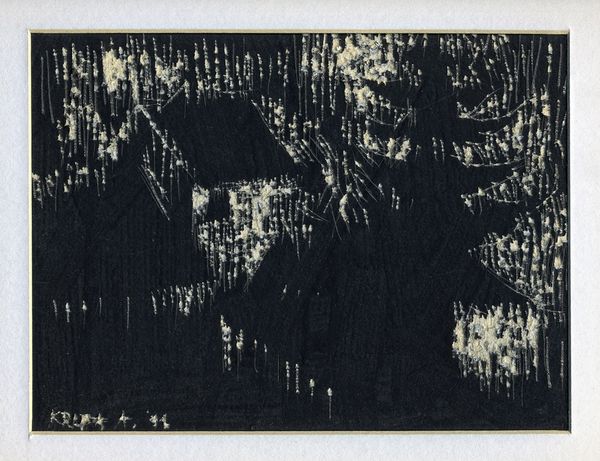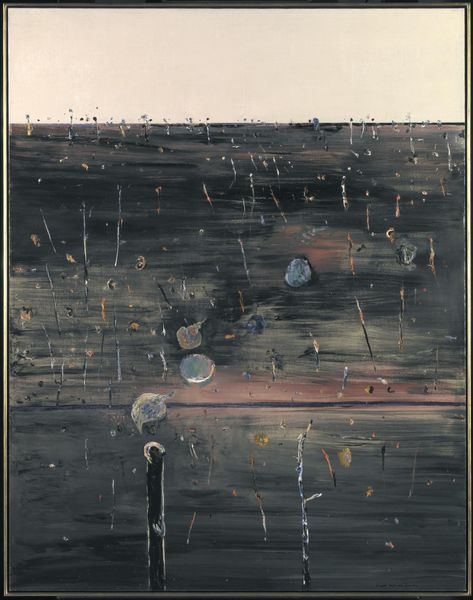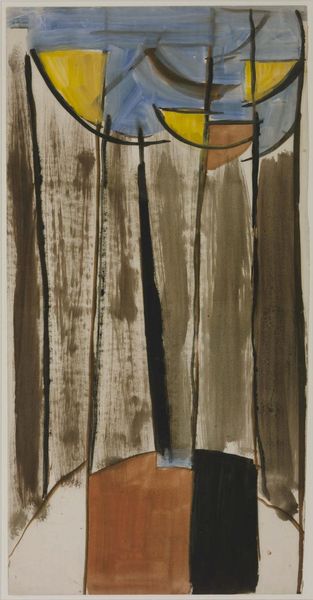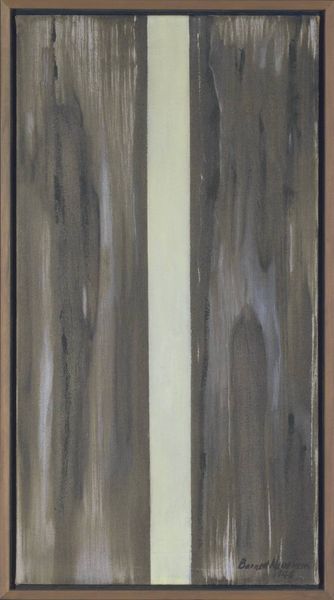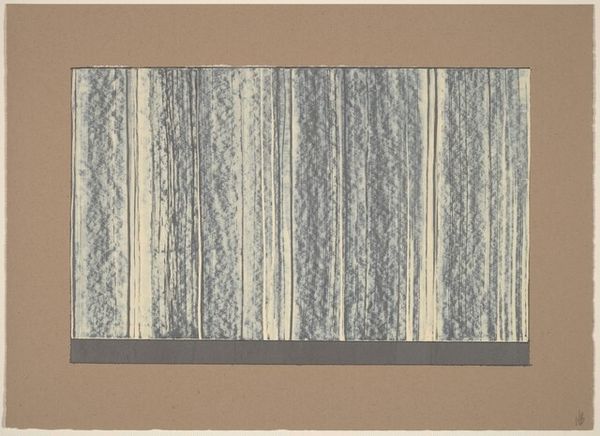
#
capitalist-realism
Copyright: Modern Artists: Artvee
Curator: Here we have Gerhard Richter’s “Abstrakte Skizze,” painted in 1991. It's oil on canvas, embodying elements of both abstract and landscape styles. Editor: It's quite somber, isn't it? The restricted palette, almost monochromatic, lends a brooding atmosphere. I'm immediately struck by the materiality of the paint itself. You can see how thickly it's been applied in some areas. Curator: Absolutely. Notice how Richter utilizes vertical strokes layered over horizontal planes. The intersection of these contrasting orientations constructs a dynamic visual field. We can decode the semiotic interplay of these marks, reading it as a symbolic deconstruction of landscape conventions. Editor: I’m more intrigued by the painting's process – the very act of layering and scraping that produced these textured surfaces. I wonder what tools were used, what the artist's studio was like, and the social conditions around access to these materials that led to these brushstrokes. The artist’s gestures tell a story as important as any overt subject matter. Curator: A compelling point. Considering the socio-economic conditions, we might view Richter's blurring technique as an interrogation of image culture itself, critiquing the accessibility and commodification of representation in the late 20th century. Editor: Precisely! By acknowledging its making and its materiality, the artwork actively resists being only a passively consumed aesthetic object. Curator: It's a testament to Richter’s complex engagement with the legacy of Modernism. Editor: And to how much a painting's materials and production can illuminate our understanding, sometimes even beyond intentional symbolism. Curator: Indeed, offering both intellectual engagement and sensorial experience. Editor: Yes, I leave now pondering more about Richter's brushes than the subject.
Comments
No comments
Be the first to comment and join the conversation on the ultimate creative platform.
